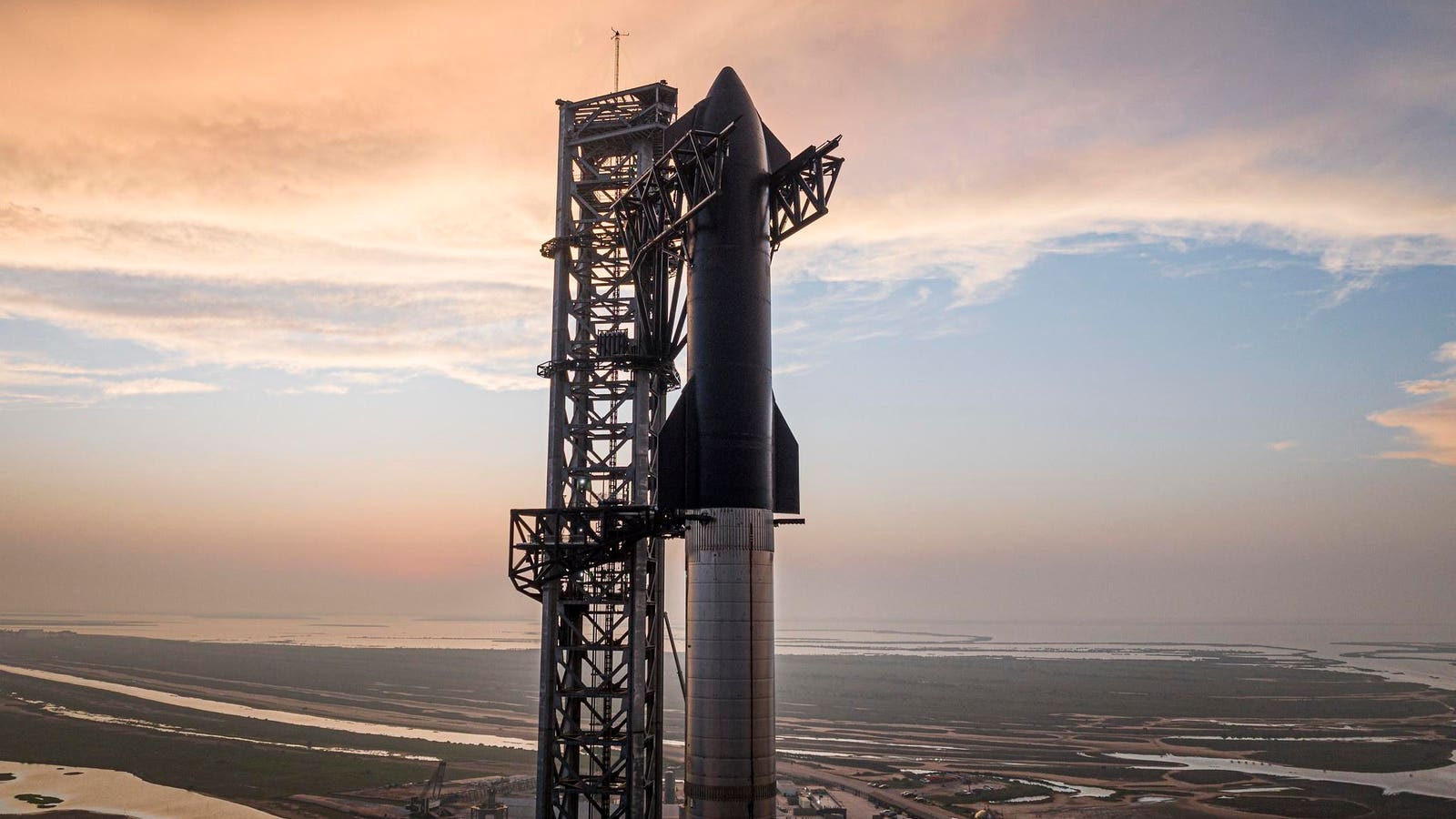
SpaceX’s Starship Will Fly Thursday—Where And When To Watch Live
The third flight test of Starship is targeted to launch Thursday, March 14. The 110-minute test … [+] window opens at 7:00 a.m. CDT.
SpaceX
SpaceX is targeting early on Thursday morning for a launch into orbit of Starship, its 400-foot tall rocket that NASA will use to land two astronauts on the moon by 2026.
Aiming for a historic first will be SpaceX’s Starship vehicle atop its Super Heavy booster, which last flew—for just eight minutes—last November.
When Starship Will Launch
SpaceX is targeting 7:00 a.m. CDT (8:00 a.m. EDT) on Thursday, March 14, to launch Starship into orbit. However, this is the beginning of a 110-minute launch window, so it could launch at any time between 7:00 a.m. CDT and 8:50 a.m. CDT (8:00 a.m. EDT and 9:50 a.m. EDT).
The launch site is SpaceX’s Starbase in Boca Chica, Texas.
Where And When To Watch Starship Launch
A webcast from SpaceX will begin 30 minutes before liftoff. If it doesn’t slip, that will be 6:30 a.m. CDT (7:30 a.m. EDT).
There are three places to watch it live:
What Starship Will Attempt To Do
The main aim of this test is to get Starship into orbit for the first time, though that’s not explicitly mentioned in its publicly stated objectives. According to SpaceX’s website, they include:
- Successful ascent burn of both stages.
- Opening and closing Starship’s payload door.
- A propellant transfer demonstration during the upper stage’s coast phase.
- A re-light of a Raptor engine while in space.
- Controlled reentry of Starship.
“It will also fly a new trajectory, with Starship targeted to splashdown in the Indian Ocean,” reads the website. “This new flight path enables us to attempt new techniques like in-space engine burns while maximizing public safety.”
What Happened On Starship’s Last Flight Test
Starship’s last outing was on November 18, lifting off at 7:02 a.m. CT to perform a long suborbital trajectory. SpaceX lost contact with it after eight minutes. SpaceX said the failure was linked to venting liquid oxygen propellant, according to Space News.
“Recursive improvement is essential as we work to build a fully reusable transportation system capable of carrying both crew and cargo to Earth orbit, help humanity return to the Moon, and ultimately travel to Mars and beyond,” said SpaceX’s website.
Wishing you clear skies and wide eyes.


